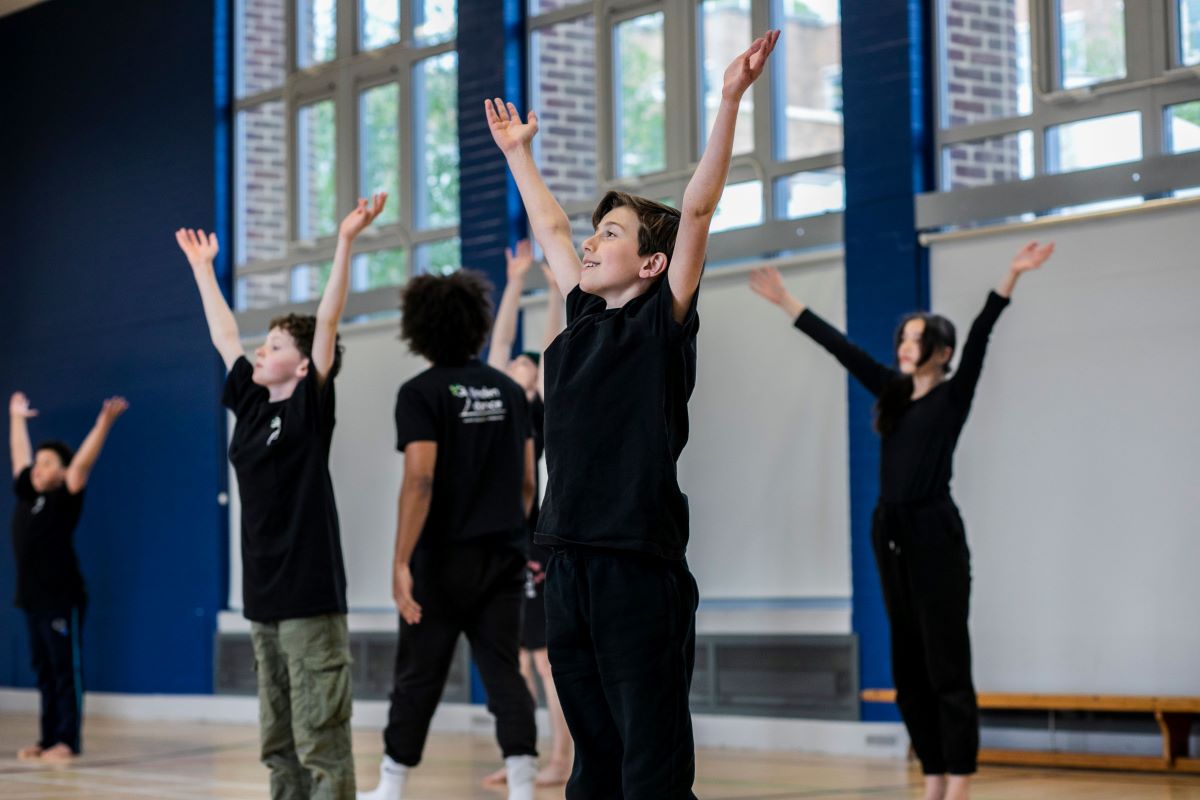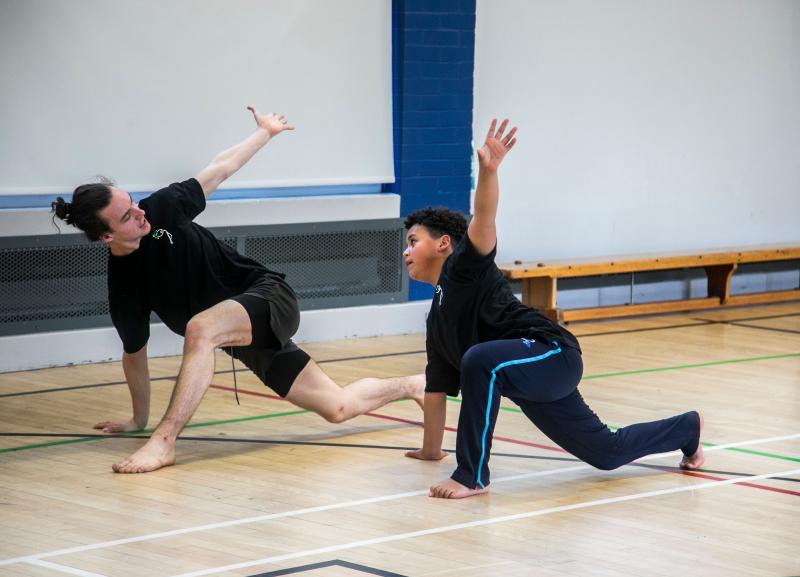
Linden Dance by One Dance UK
Photo: Dani Bower
Don’t dance, because nobody’s watching
Dance is part of the national curriculum and schools are statutorily obliged to provide it. So why is a blind eye being turned to the dramatic decline in dance education at all levels? asks Joe Hallgarten.
Every Friday in the east London school I teach in, there is a whole school ‘whoop whoop assembly’. Led by year 6 children and the headteacher, among the usual achievement awards and reflections there is dancing. Whole classes come in boogying. Individual children are invited onto the stage to strut their stuff and teach others the moves they are busting. It’s as close to a primary school rave as you can get away with.
For many schools, this is probably as good as it gets, dance-wise. Dance has never had a particularly prominent place in children’s formal education, but the last decade has witnessed a wilful destruction of opportunities, access and progression in dance. 84% of schools no longer offer a GCSE in dance. And over the last decade, the numbers taking GCSE dance have fallen by 48% and by 56% for A-level.
All three statistics are higher than for any other arts subject. There is no equivalent data available for primary schools, but perception surveys have consistently revealed similar reductions in dance opportunities for younger pupils too.
Most schools failing to meet statutory obligations
One Dance UK’s 2022 report further interrogates this decline. Dance teachers report reductions in teaching hours, spaces to do dance, and extra-curricular opportunities. Outside school, the data is less depressing. DCMS’s Taking Part survey reveals a rise in the numbers of 5-10-year-olds doing dance outside school, although these gains are not sustained for teenagers. There are also some interesting regional variations. Young people in the North East are 40% less likely than their South East peers to take up dance outside school.
Ofsted’s 2023 PE report should add to concerns: “In two thirds of the schools, dance is not taught to all pupils, or the dance content being taught is not well organised.” A third of secondary schools don’t teach dance at all at Key Stage Three. “In only a fifth of schools, pupils spoken with could recall declarative knowledge [whatever that is?] related to dance.”
Let’s not forget dance is part of the national curriculum so – in theory – a compulsory subject for all pupils from ages 5 -14. Schools that don’t teach dance are breaking the law. (Academies don’t have to follow the national curriculum but they do teach most of it and have to state publicly the reason for any variations or omissions.)
In practice, most schools fail to meet statutory obligations and nobody seems to care. Ofsted’s report should set DfE alarm bells ringing; their silence is telling, though predictable. Since former Education Secretary Michael Gove’s pillorying of Dance A’ level in 2009, various policymakers and opinion formers have used dance as a symbol for soft, low-value education options.
Continues…
 Linden Dance by One Dance UK. Photo: Dan Bower
Linden Dance by One Dance UK. Photo: Dan Bower
Accountability measures have taken their toll
The EBacc, along with other accountability measures and various constraints on schools, has without doubt taken its toll. But dance-specific factors are also at play.
The positioning of dance between PE and the performing arts makes it vulnerable to slipping through both nets. Historically, there has been some suspicion in education about whether dance is worth bothering with, and some fear the emotional places dance can take you to – not to mention traumatic memories of dancing to BBC tapes in halls in vests and pants.
PE teachers and coaches might be part of the problem. They usually come from a sports background and vastly prefer teaching sports – or possibly gymnastics – to dance. If dance slips to the bottom of curriculum or out of plans altogether, school leaders rarely notice or worry.
Dance organisations do their best to support schools against a backdrop of reductions in their own funding – often more than other artforms – as do individual dance educators. But one-off dance workshops often act as fig leaves to hide schools’ apathy.
This matters. One Dance UK offers brilliant summaries of what dance can give to young people – a unique combination of the physical and the expressive. In terms of cultural capital, most children are being denied access to the ‘best that has been felt and moved’. They will leave school without the confidence to express their emotions through movement.
Dance supports pupil wellbeing
However, we should not overstate the academically instrumental or cross-curricular value of dance. Maybe kids can learn punctuation through dance, but that’s not really the point. Dance can and should play a part in supporting more pupils’ wellbeing and could become a key element of approaches to social and emotional learning.
When I look at the stage in our Friday assemblies, most of the kids dancing are boys who struggle to keep still in class. Many have an ADHD diagnosis. What if dance became a systematic, and rigorously evaluated, way to channel this desire to move for a much greater part of day? It wouldn’t stop all the fidgeting – nothing would – but it might help pupils deal with the ever more academic demands of our classrooms.
There are no simple or short-term solutions for this crisis in dance education. It will take long-term will, vital policy changes – scrapping the EBacc? – and a transformation in the attitudes of school leaders and PE teachers. While the cultural sector is getting better at speaking with one voice, as we plot the revival of cultural education in England, let’s pay attention to how to get all school kids dancing again. Whoop whoop to that.
Joe Hallgarten is a primary school teacher and education researcher and consultant. He was formerly CEO of the Centre for Education and Youth.
![]() @joehallg
@joehallg
Join the Discussion
You must be logged in to post a comment.